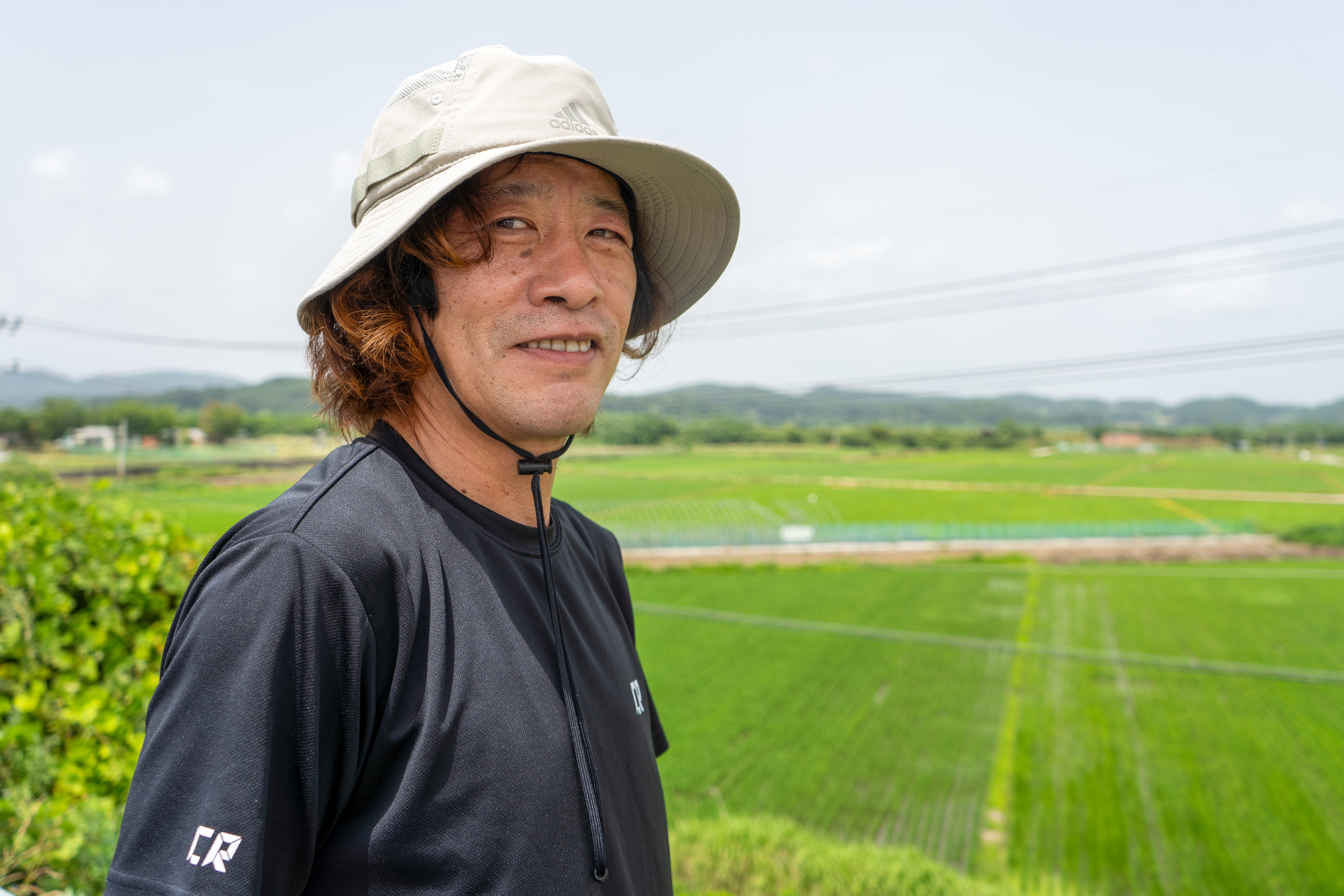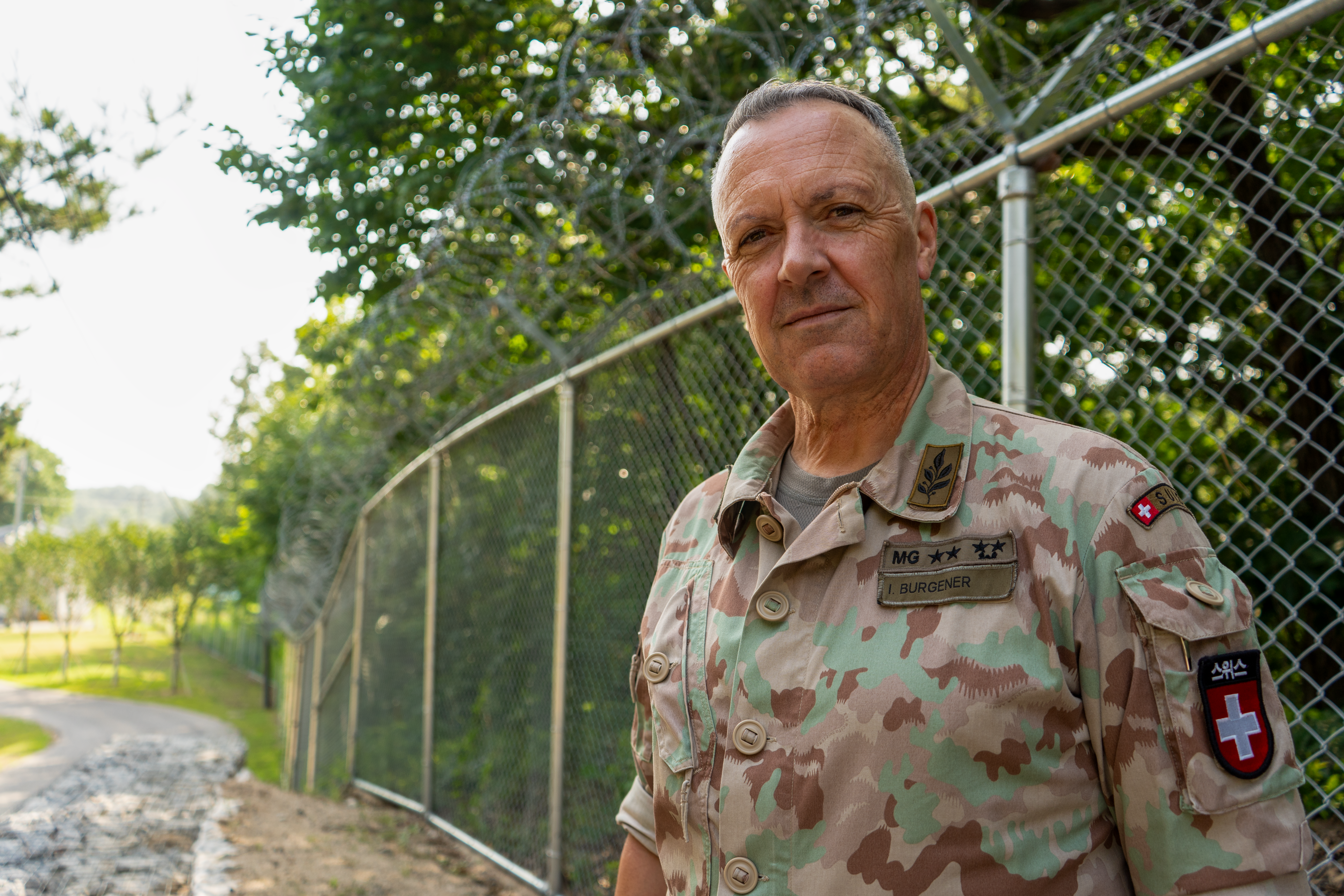‘This is very serious’: Tensions spike in the buffer zone between North and South Korea
As fears rise over an armed clash in the demilitarised zone, Jan Camenzind Broomby speaks to Swiss soldiers and worried local residents about what might come next

In Majeong-ri, South Korea, Yoon Seol Hyun proudly claims to run the closest guesthouse to North Korea. Only a bridge, a set of guard posts, and several lines of barbed wire fence separate his village from the demilitarised zone (DMZ) which splits the Korean peninsula in two.
Normally, his hostel offers a peaceful getaway for locals visiting from the nearby capital of Seoul. But tensions between the North and the South have spiked recently and Yoon is worried, with a number of incidents around the DMZ, which is 150 miles long and 2.5 miles wide.
Last month, a number of North Korean soldiers – believed to be between 20 and 30 – briefly crossed the demarcation line on three occasions, retreating after soldiers from the South fired warning shots. Seoul said the incidents were likely accidents. Meanwhile, the North has been sending balloons filled with rubbish over the border, it claims in retaliation for a propaganda campaign by North Korean defectors and activists in the South who regularly send over balloons carrying food, medicine, money and leaflets criticising the North’s leaders.
Yoon worries that if things escalate, both sides of the peninsula will go from trading balloons to trading bullets and bombs instead, and that his village will be the first to be impacted.
“Hostility between South and North is higher,” he says. “This area is close to the border, it is very serious, we worry about that.”

Tasked with monitoring these developments is Major General Ivo Burgener, head of the Swiss delegation to the Neutral Nations Supervisory Commission (NNSC). Currently made up of five Swiss and five Swedish soldiers who live inside the DMZ, the NNSC has monitored adherence to the Korean war’s armistice agreement since it was signed in 1953. While this armistice ended hostilities, a peace treaty was never signed and both sides remain technically at war.
Stationed in a hut just metres from the North Korean border, Burgener and the NNSC have a frontline view of how the frozen conflict has developed. Since the start of the year, they have noticed a significant remilitarisation on both sides of the DMZ.
“There are more activities in the DMZ,” Burgener adds, also citing an increase in soldiers, weapons, and construction activity. “The situation is becoming more uncertain.”
With Pyongyang developing its military infrastructure, destroying sections of road, building walls, and planting landmines, explosions from the Northern side now also regularly interrupt the NNSC’s work. South Korea’s Yonhap News Agency reported recently that North Korean soldiers had sustained “multiple casualties” caused by landmines exploding on the Northern side of the DMZ.
“We are seeing more and more militarisation efforts,” explains NNSC operations officer Lieutenant Colonel Livio Raeber. “There is more military equipment inside the DMZ.” Previously unarmed soldiers that face off on either side of the border are now once again armed, and both sides have begun to rebuild formerly decommissioned guard posts.
While the balloons are described by analysts as “low-level provocations,” Burgener points out that they have not helped to de-escalate tensions.

“The possibility of an escalation is higher than before, and this is something that we monitor very closely,” Raeber adds.
“The risk of misunderstandings and unplanned incidents along the DMZ are rising,” says Burgener. In a worst-case scenario, he warned this could lead to “escalation, the outbreak of a conflict”.
At the start of the year, North Korea's Kim Jong-un branded the South a “principal enemy” and relations on the Korean peninsula are now arguably “at the lowest point in the last five or six years”, said Dr Edward Howell, a Korean Foundation fellow at Chatham House.
Kim’s recent meeting with Russian leader Vladimir Putin, which culminated in the signing of a strategic partnership agreement between the two, has also added to the tension. The guesthouse owner Yoon says that things do not need to be this bad.
In 2018, both sides signed an agreement, aimed at decreasing tensions by partially demilitarising the DMZ, and he was hopeful that the agreement could mitigate the risk of conflict.
“We were very thankful,” he says. “Those times were more peaceful.”
Now, Yoon's phone buzzes with alerts. Issued by authorities in Seoul, they warn of more incoming balloons and other notes. Yoon sees his responsibility to help maintain peace and he regularly organises events to educate tourists about the area.
And despite living on the frontlines of this frozen conflict, he has no intention of leaving. “This is my hometown,” he says. “I was born in this village, my father, my grandfather was born in this village.”






Join our commenting forum
Join thought-provoking conversations, follow other Independent readers and see their replies
Comments